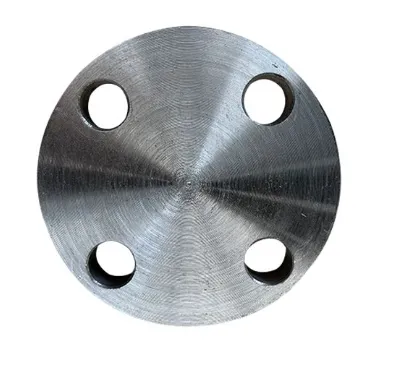-
Cangzhou Yulong Steel Co., Ltd.
-
Phone:
+86 13303177267 -
Email:
admin@ylsteelfittings.com
- English
- Arabic
- Italian
- Spanish
- Portuguese
- German
- kazakh
- Persian
- Greek
- French
- Russian
- Polish
- Thai
- Indonesian
- Vietnamese
- Zulu
- Korean
- Uzbek
- Hindi
- Serbian
- Malay
- Ukrainian
- Gujarati
- Haitian Creole
- hausa
- hawaiian
- Hebrew
- Miao
- Hungarian
- Icelandic
- igbo
- irish
- Japanese
- Javanese
- Kannada
- Khmer
- Rwandese
- Afrikaans
- Albanian
- Amharic
- Armenian
- Azerbaijani
- Basque
- Belarusian
- Bengali
- Bosnian
- Bulgarian
- Catalan
- Cebuano
- China
- China (Taiwan)
- Corsican
- Croatian
- Czech
- Danish
- Esperanto
- Estonian
- Finnish
- Frisian
- Galician
- Georgian
- Kurdish
- Kyrgyz
- Lao
- Latin
- Latvian
- Lithuanian
- Luxembourgish
- Macedonian
- Malgashi
- Malayalam
- Maltese
- Maori
- Marathi
- Mongolian
- Myanmar
- Nepali
- Norwegian
- Norwegian
- Occitan
- Pashto
- Dutch
- Punjabi
- Romanian
- Samoan
- Scottish Gaelic
- Sesotho
- Shona
- Sindhi
- Sinhala
- Slovak
- Slovenian
- Somali
- Sundanese
- Swahili
- Swedish
- Tagalog
- Tajik
- Tamil
- Tatar
- Telugu
- Turkish
- Turkmen
- Urdu
- Uighur
- Welsh
- Bantu
- Yiddish
- Yoruba

Dec . 11, 2024 12:27 Back to list
jis b 2220 flange
Understanding JIS B 2220 Flanges Specifications and Applications
Flanges are crucial components in piping systems, serving as the interface for connecting pipes, valves, pumps, and other equipment. Among the various flange standards, the Japanese Industrial Standard (JIS) B 2220 provides significant specifications relevant to engineers and manufacturers. This article will delve into the key aspects of JIS B 2220 flanges, covering their specifications, applications, and advantages in various industries.
Overview of JIS B 2220
JIS B 2220 encompasses the design, dimensions, and mechanical properties of flanges used in piping systems. The standard is particularly important in Japan, where it ensures that components meet stringent quality and safety requirements. JIS B 2220 flanges are standardized to ensure uniformity in manufacturing, facilitating interoperability among various equipment and systems.
The flanges specified under JIS B 2220 are categorized based on their pressure ratings, which range from 0.25 MPa to 2.5 MPa and above. This classification is essential as it helps in understanding the application of each flange type in different operational conditions. The flanges are typically made of carbon steel, stainless steel, and other alloys, depending on the requirements of the piping system.
Design and Specifications
JIS B 2220 specifies various design elements for flanges, including their dimensions, bolt holes, and thicknesses. The standard outlines several flange types, including
1. Slip-on Flanges These flanges slip over the pipe and are welded on both sides, providing a robust connection with ease of alignment. 2. Weld Neck Flanges Known for their versatility, these flanges are characterized by a long tapered neck that provides a smooth transition between the flange and the pipe. 3. Blind Flanges Used to close off the ends of piping systems, these flanges have no opening in the center, providing an essential seal.
4. Socket Weld Flanges Designed for high-pressure systems, socket weld flanges allow the pipe to fit into the flange socket for a strong welded joint.
The dimensions of JIS B 2220 flanges, including their diameter, thickness, and bolt hole specifications, are crucial for ensuring compatibility with piping systems. Engineers must consider these dimensions when designing piping layouts to avoid leaks and ensure safety.
Applications in Various Industries
JIS B 2220 flanges find widespread applications across several industries, including
jis b 2220 flange

- Oil and Gas The robust nature of these flanges makes them suitable for high-pressure environments typical in oil and gas exploration and transportation.
- Chemical Processing The resistance to corrosive substances in various alloy materials allows these flanges to be used in chemical reactors and pipelines.
- Water Treatment JIS B 2220 flanges are employed in both municipal and industrial water treatment facilities, where they help manage the flow of water and maintain system integrity.
- Power Generation In power plants, flanges are vital for the safe transportation of steam and other fluids, ensuring efficient energy production.
Advantages of Using JIS B 2220 Flanges
The adoption of JIS B 2220 flanges brings several advantages
1. Standardization The standardization ensures high quality and compatibility, simplifying the procurement process for engineers and manufacturers.
2. Durability The materials used in JIS B 2220 flanges are designed to withstand extreme conditions, which enhances the longevity of piping systems.
3. Safety By adhering to strict specifications, these flanges contribute to the overall safety of the piping systems, reducing the risk of leaks or failures.
4. Versatility The range of flange types available under this standard allows for diverse applications, catering to the specific needs of various industries.
Conclusion
JIS B 2220 flanges represent a critical component in modern engineering and construction, particularly in high-stakes industries like oil and gas, chemical processing, and water treatment. Understanding the specifications, advantages, and applications of these flanges can aid engineers and industry professionals in making informed decisions for their piping systems. By prioritizing quality and compatibility, JIS B 2220 flanges not only enhance system integrity but also promote safety and efficiency across various operational contexts.
Latest news
-
ANSI 150P SS304 SO FLANGE
NewsFeb.14,2025
-
ASTM A333GR6 STEEL PIPE
NewsJan.20,2025
-
ANSI B16.5 WELDING NECK FLANGE
NewsJan.15,2026
-
ANSI B16.5 SLIP-ON FLANGE
NewsApr.19,2024
-
SABS 1123 FLANGE
NewsJan.15,2025
-
DIN86044 PLATE FLANGE
NewsApr.19,2024
-
DIN2527 BLIND FLANGE
NewsApr.12,2024
-
JIS B2311 Butt-Welding Fittings LR/SR 45°/90° /180°Seamless/Weld
NewsApr.23,2024











